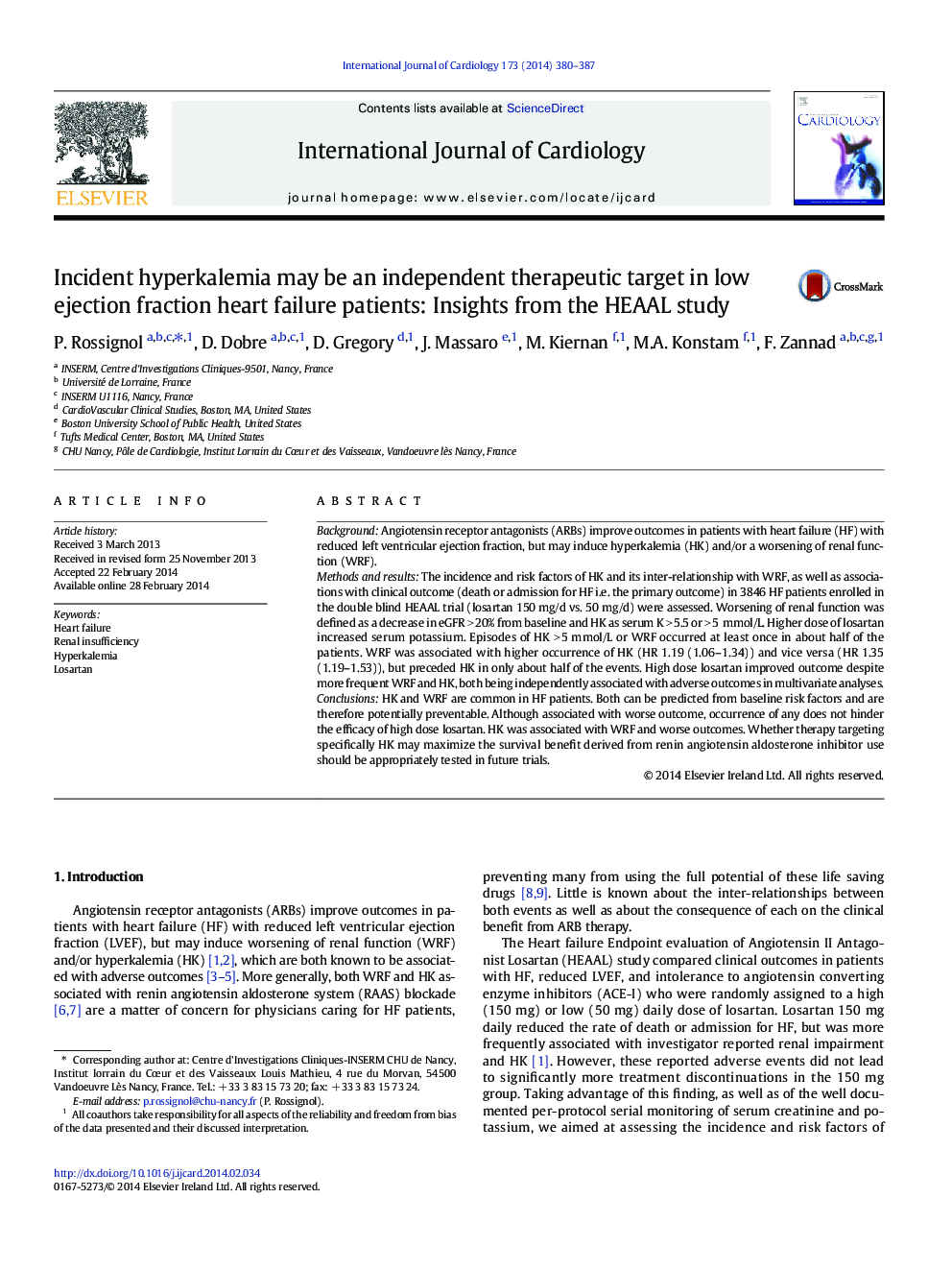| Article ID | Journal | Published Year | Pages | File Type |
|---|---|---|---|---|
| 5972766 | International Journal of Cardiology | 2014 | 8 Pages |
BackgroundAngiotensin receptor antagonists (ARBs) improve outcomes in patients with heart failure (HF) with reduced left ventricular ejection fraction, but may induce hyperkalemia (HK) and/or a worsening of renal function (WRF).Methods and resultsThe incidence and risk factors of HK and its inter-relationship with WRF, as well as associations with clinical outcome (death or admission for HF i.e. the primary outcome) in 3846 HF patients enrolled in the double blind HEAAL trial (losartan 150Â mg/d vs. 50Â mg/d) were assessed. Worsening of renal function was defined as a decrease in eGFR >Â 20% from baseline and HK as serum K >Â 5.5 or >Â 5Â mmol/L. Higher dose of losartan increased serum potassium. Episodes of HK >Â 5Â mmol/L or WRF occurred at least once in about half of the patients. WRF was associated with higher occurrence of HK (HR 1.19 (1.06-1.34)) and vice versa (HR 1.35 (1.19-1.53)), but preceded HK in only about half of the events. High dose losartan improved outcome despite more frequent WRF and HK, both being independently associated with adverse outcomes in multivariate analyses.ConclusionsHK and WRF are common in HF patients. Both can be predicted from baseline risk factors and are therefore potentially preventable. Although associated with worse outcome, occurrence of any does not hinder the efficacy of high dose losartan. HK was associated with WRF and worse outcomes. Whether therapy targeting specifically HK may maximize the survival benefit derived from renin angiotensin aldosterone inhibitor use should be appropriately tested in future trials.
